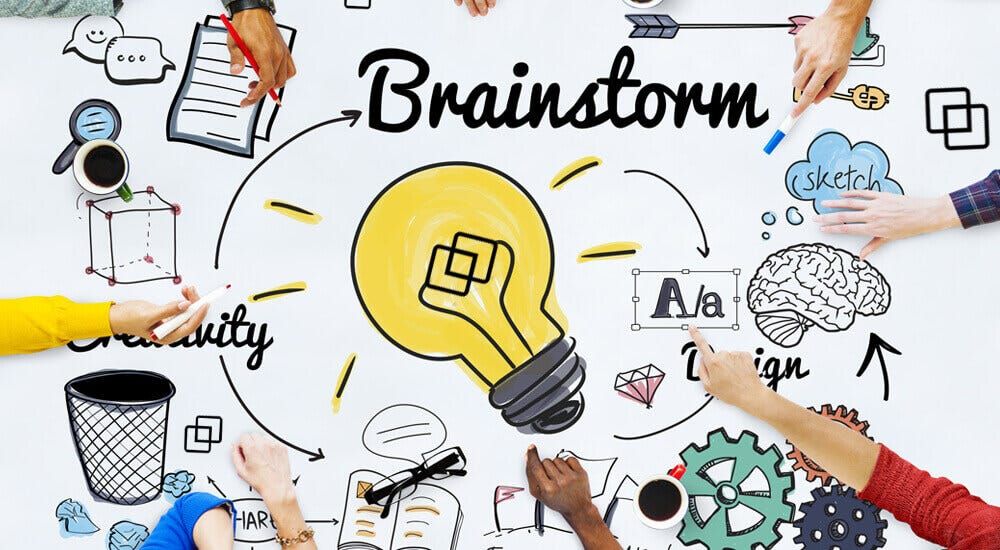Problem-Solving Skills: Addressing Common Behavioral Issues
Behavioral issues can arise in various settings like school, workplace, and home. Common behavioral problems at school include inattention, hyperactivity, defiance, and aggression (Source). In the workplace, issues may involve poor productivity, interpersonal conflict, absenteeism, and substance abuse (Source). At home, some common problems are tantrums, fighting with siblings, lack of self-control, and not following rules (Source). Whatever the environment, behavioral problems can be disruptive and difficult to manage. Teaching positive problem-solving skills may help address many underlying causes.
Defining Problem-Solving Skills
Problem-solving skills refer to the ability to identify issues, analyze information, generate potential solutions, evaluate options, and implement the best course of action. According to Indeed, problem-solving involves critical thinking, analysis, and decision making to overcome challenges and achieve objectives (https://www.indeed.com/career-advice/resumes-cover-letters/problem-solving-skills).
Specifically, problem-solving skills enable individuals to:
- Recognize problems and understand their nature and context
- Break large problems down into manageable components
- Research relevant information and identify underlying causes
- Brainstorm creative solutions and predict potential outcomes
- Use logic, reasoning, and evidence to select the optimal solution
- Develop and execute a plan to test and implement the chosen solution
- Learn from results to improve future problem-solving
Strong problem-solving skills allow people to rationally and systematically work through unknowns, complexities, and obstacles to achieve resolutions.
Assessing the Situation
The first step in the problem-solving process is to identify and clarify the problem. This involves gathering information to fully understand the issue. It’s important to differentiate between observable facts and personal opinions about the situation 1. Useful techniques include asking who, what, when, where, why, and how questions to collect data. Surveys, observations, and talking to stakeholders can also provide insight.

Next, it’s helpful to specify the root causes of the problem rather than just the symptoms. Tools like the 5 Whys and fishbone diagram can help drill down to the underlying reasons the issue is occurring 2. Fully grasping the current situation allows for more informed solution generation.
Generating Potential Solutions
Brainstorming is one of the most common techniques for generating potential solutions to a problem. It involves coming up with as many ideas as possible without judging or evaluating them initially. Brainstorming helps break mental blocks and expand creative thinking. It can be done individually or in groups. The key is to let ideas flow freely and build off of others’ suggestions. Recording all the ideas generated is important so they can be organized and evaluated later.
Some tips for effective brainstorming include: setting a time limit, encouraging wild ideas, avoiding criticism of ideas, building on others’ suggestions, focusing on quantity of ideas, and appointing someone to record the ideas. After generating a list of many possible solutions, each one can then be analyzed by weighing pros and cons to determine viability. Thinking critically about the upsides and downsides of each proposed solution can help narrow down the options to find the best ones to implement. Consulting experts, research, and facts can further inform this process.
Other techniques like mind mapping and brainwriting can also help generate potential solutions by visually mapping out ideas and allowing people to build on each other’s ideas iteratively.
Selecting the Best Solution
Once you have generated a list of potential solutions, the next step is to evaluate each option to determine the best solution to implement. According to David Summerton Consulting, “Set the goals you wish to achieve: use economic or non-economic criteria BUT be very clear about the outcome that you want. Set and weight the criteria for an acceptable solution,” (source). When selecting the best solution, you’ll want to consider criteria like feasibility, cost, resources required, and how effectively it addresses the root cause of the problem. The solution that scores highest across your weighted criteria is likely the best option to move forward with.
To choose the most feasible and effective solution, first review your list through the lens of must-have criteria. This weeds out any options that are simply not viable given your circumstances. Next, compare the remaining solutions against weighted criteria like impact and ease of implementation. The option that best satisfies your prioritized criteria is the best solution for the problem at hand. According to Entrepreneur, “The ultimate goal is to find the best possible solution that covers the top priorities of the problem,” (source). Keeping your end goal and key criteria in mind will lead you to the optimal solution.
Implementing the Solution
Once a solution has been selected, the next step is to implement it. This involves carrying out the plan that was developed and monitoring progress along the way. Some key aspects of implementing the solution include:
Clearly communicating the plan to those involved so everyone understands their roles and responsibilities. Setting up a timeline with milestones and deadlines helps keep implementation on track (Source).
Allocating the necessary resources, including people’s time and effort, funding, equipment, and information. Having the proper resources available makes it easier to execute the plan successfully.
Monitoring the implementation and tracking progress. This allows you to identify any issues or changes needed to keep things on track. Collecting data and feedback along the way is crucial (Source).
Making adjustments as needed. Implementation may not always go exactly as planned. Being flexible and adapting to changes or setbacks helps ensure success.
Celebrating small wins and milestones met to maintain motivation and momentum. This keeps the team engaged as the solution progresses.
Careful implementation, monitoring, and adaptation is key to translating the chosen solution into real, positive changes that address the original problem.
Evaluating the Outcome
Once a solution has been implemented, it’s important to evaluate its effectiveness. This involves assessing whether the solution actually solved the original problem or issue as intended. According to How to Evaluate and Improve Your Problem Solving Skills, you should look for patterns, trends, gaps, strengths, and weaknesses in the solution, and identify factors that influenced the outcome.
To evaluate a solution, engage with those affected by the original problem and assess if it has been resolved. Gather feedback to understand if the solution had the desired impact. Review any data or metrics relevant to the problem, and note if the metrics improved after implementing the solution. Look for unintended consequences or new issues caused by the solution. Finally, determine if the solution fully addressed the root cause of the problem, or if further iterations and adjustments are needed.
If the evaluation reveals shortcomings in the solution, the problem-solving process must continue. Make adjustments and refinements to the solution as needed. Improving problem-solving skills involves constantly learning from experience and past solutions to develop better solutions going forward.
Developing Problem-Solving Skills
Problem-solving skills can be developed and improved through practice, learning from experience, and coaching. Deliberately working through various problems and reflecting on the problem-solving process can help ingrain effective approaches. As experience is gained in solving problems, individuals can learn to avoid common pitfalls and apply proven strategies. Mentoring relationships provide guidance in applying problem-solving frameworks and developing analytical thinking. Books and online learning resources provide structured ways to improve problem-solving abilities. With concerted effort, these methods enable strengthening of core skills like identifying root causes, generating creative solutions, evaluating alternatives, and implementing optimal decisions.
According to the article “How to Improve Problem Solving Skills at Work” on hays.net.nz, actively analyzing your own problem-solving style and thought processes can enhance ability over time. The article recommends techniques such as visualizing problems through flowcharts or diagrams to clearly define relationships between various elements.
Applying Skills to Behavioral Issues
Problem-solving skills can be invaluable when addressing common behavioral issues in children. Strategies should be tailored to the specific situation in order to be most effective. Some examples include:
For acting out behaviors like tantrums or aggression, remain calm and use empathetic language to understand the child’s perspective. Work together to brainstorm potential solutions, like taking a break or using soothing techniques (https://www.ascd.org/el/articles/solving-behavior-problems-together).
For issues like lack of focus or forgetfulness, collaborate to identify triggers and patterns. Generate ideas like checklists, reminders, or changes to the environment to support the child’s needs (https://www.projectlearnet.org/tutorials/problem_solving.html).
When a child shows defiance or refuses to comply, avoid escalating the situation. State expectations clearly and give choices to empower the child. Use natural consequences and be willing to compromise when appropriate.
Reinforce positive behaviors and celebrate small wins. This encourages the child to repeat desired actions. Maintain realistic expectations and be consistent when addressing issues.
Focus on equipping the child with problem-solving strategies over time. Teach how to identify issues, ideate solutions, and evaluate outcomes. With practice, they can become more independent in addressing challenges.
Conclusion
In summary, problem-solving skills are essential for addressing common behavioral issues in the workplace and in life. The ability to assess situations, generate potential solutions, select the best course of action, implement a plan, and evaluate the outcome is critical for resolving conflicts, overcoming challenges, and achieving goals.
Developing strong problem-solving skills takes practice but is crucial for effectively managing behaviors. With a positive mindset, creative thinking, analysis, communication, and other competencies, individuals can improve their problem-solving capabilities over time.
Applying these skills to behavioral problems leads to more successful outcomes. Rather than acting reactively, a problem-solving approach involves proactively identifying issues, uncovering causes, and implementing thoughtful solutions. This process creates better relationships, productivity, and results.
Overall, nurturing problem-solving skills is vital for leadership, teamwork, and navigating complex interpersonal dynamics. The workplace, organizations, and society as a whole benefit when individuals can address behaviors constructively through critical analysis and solution-focused thinking.





